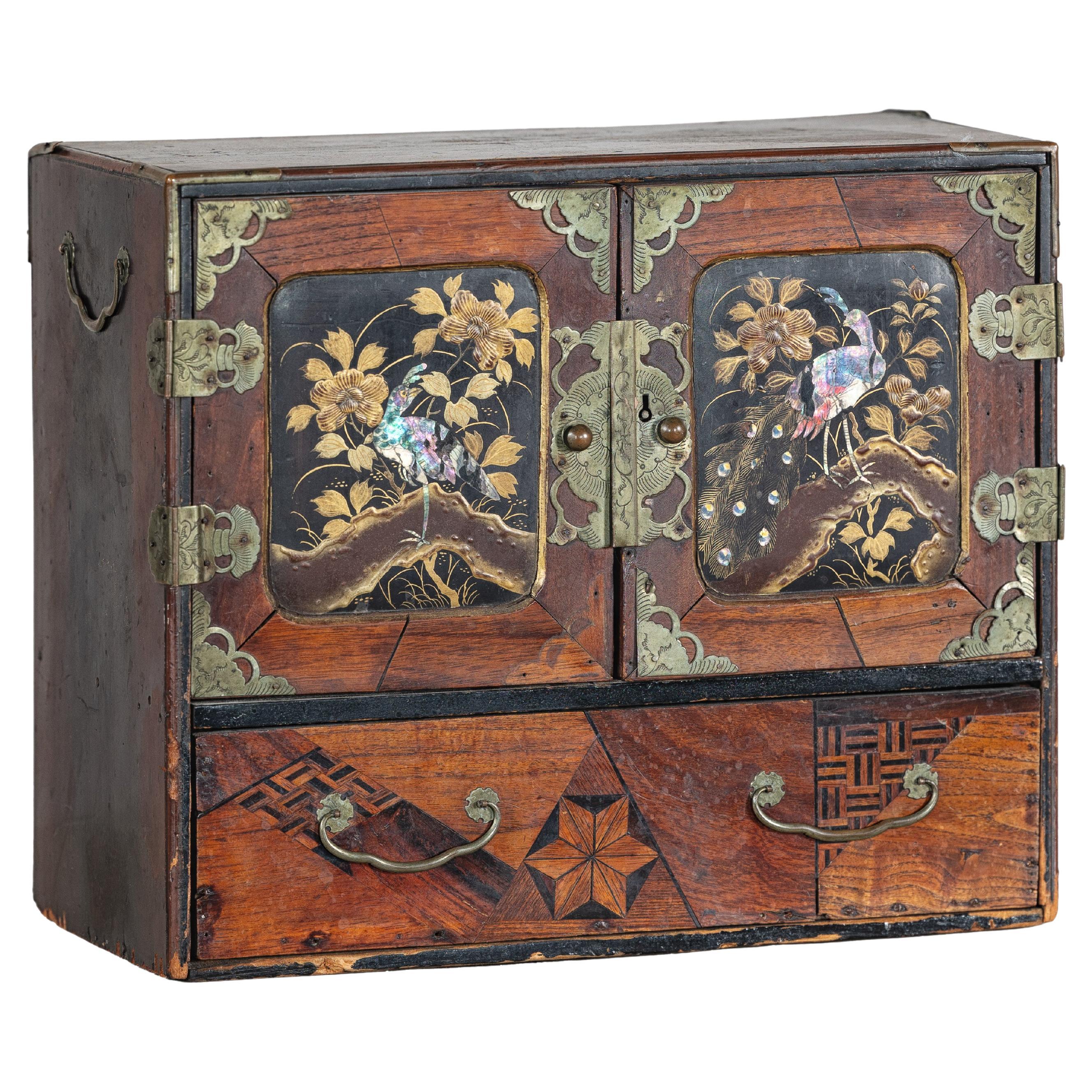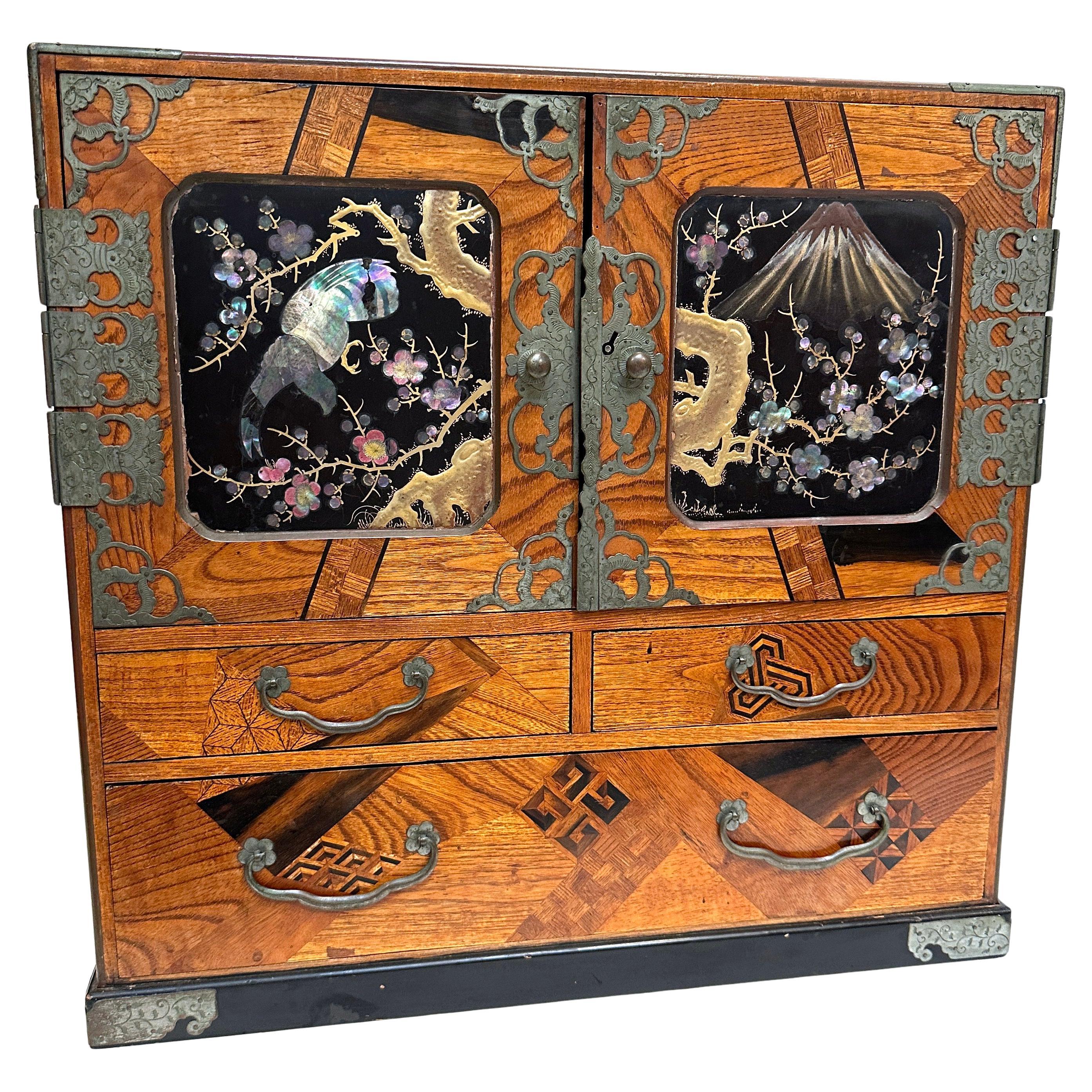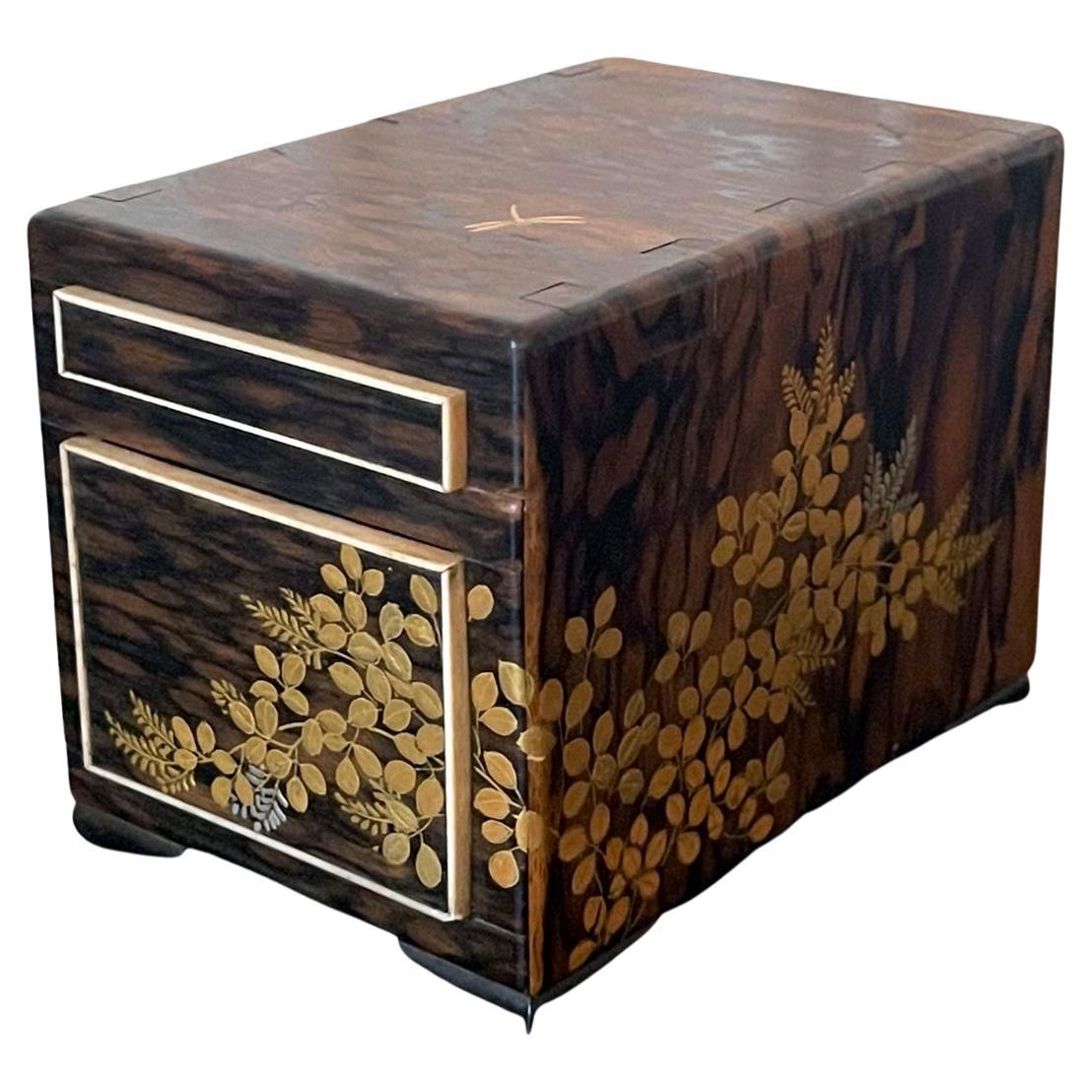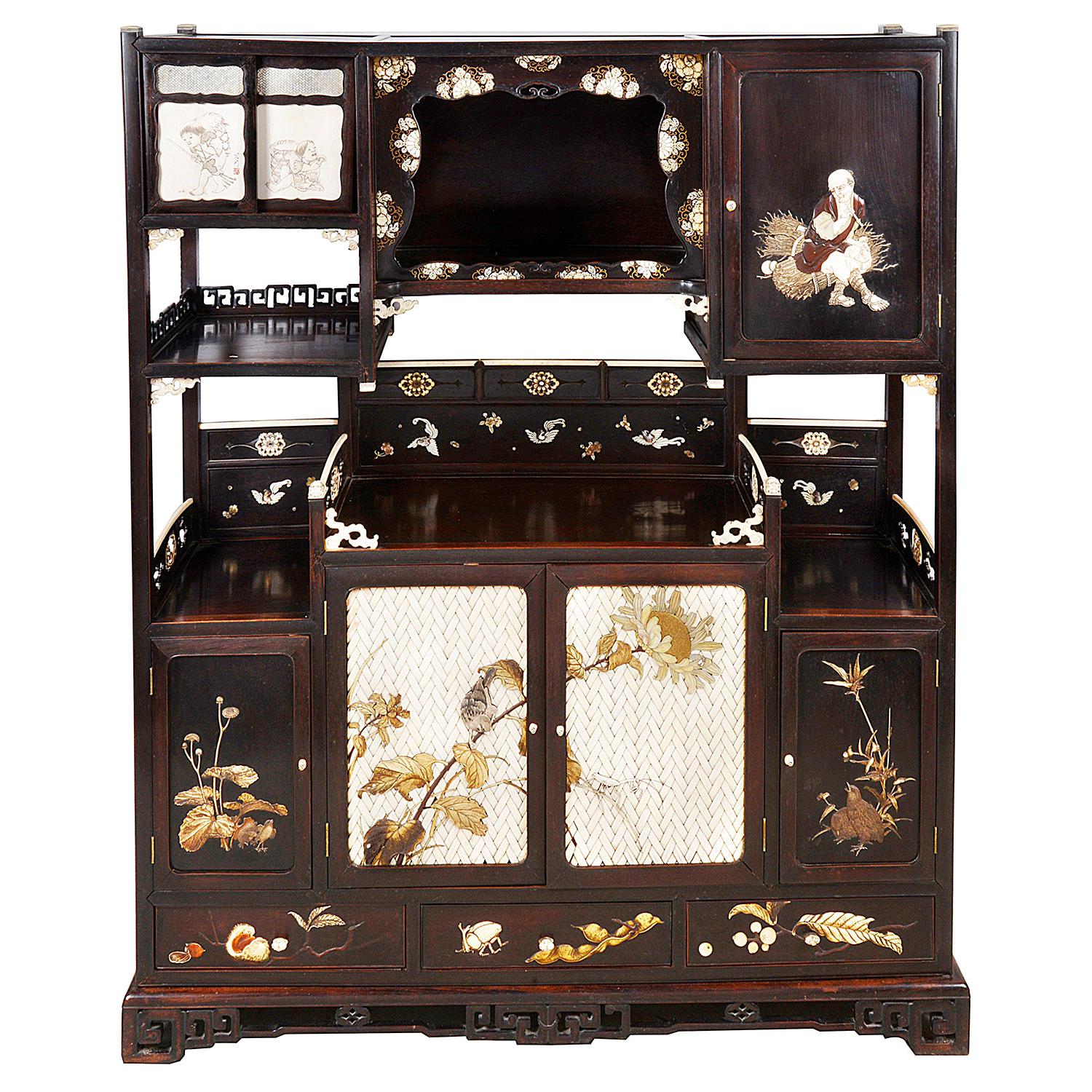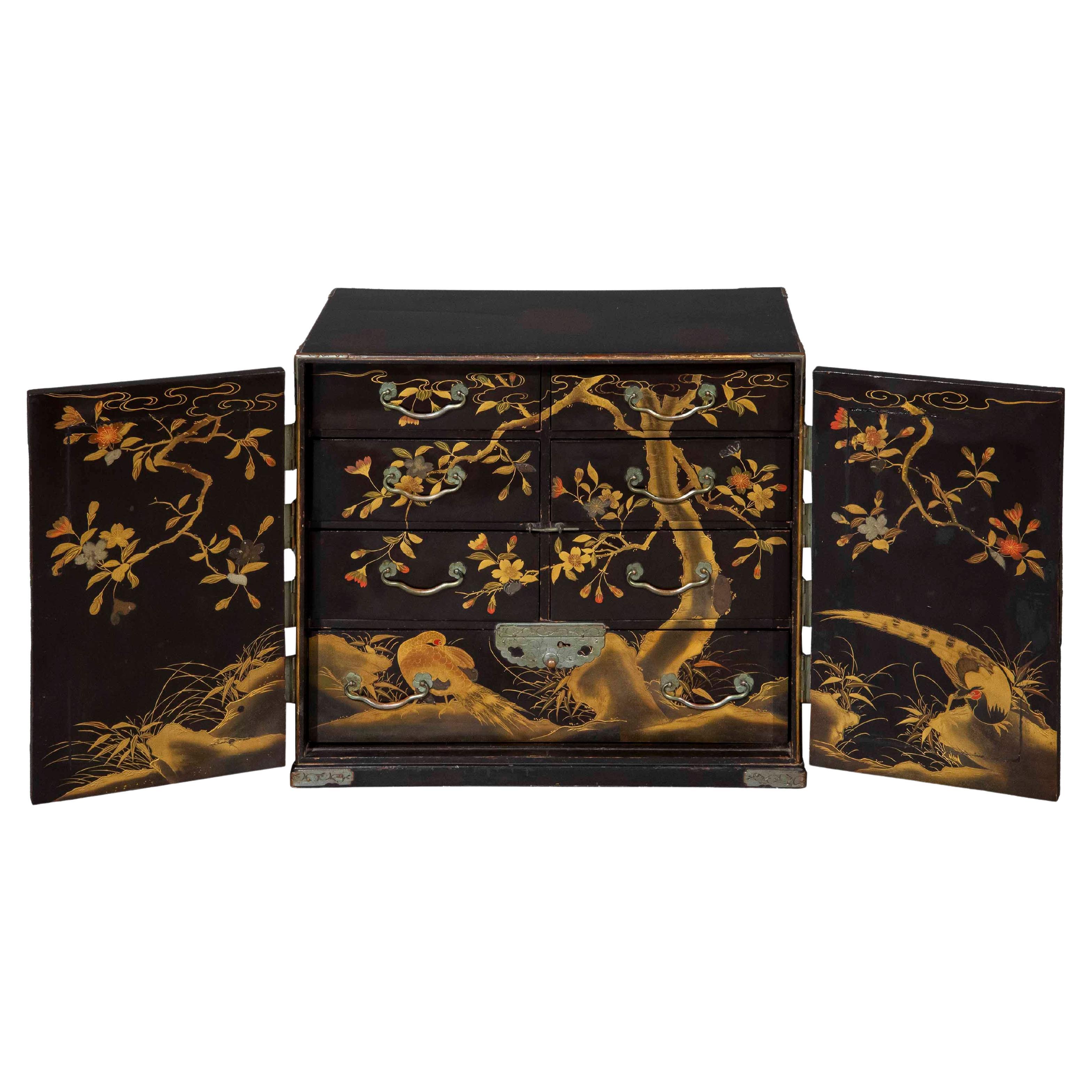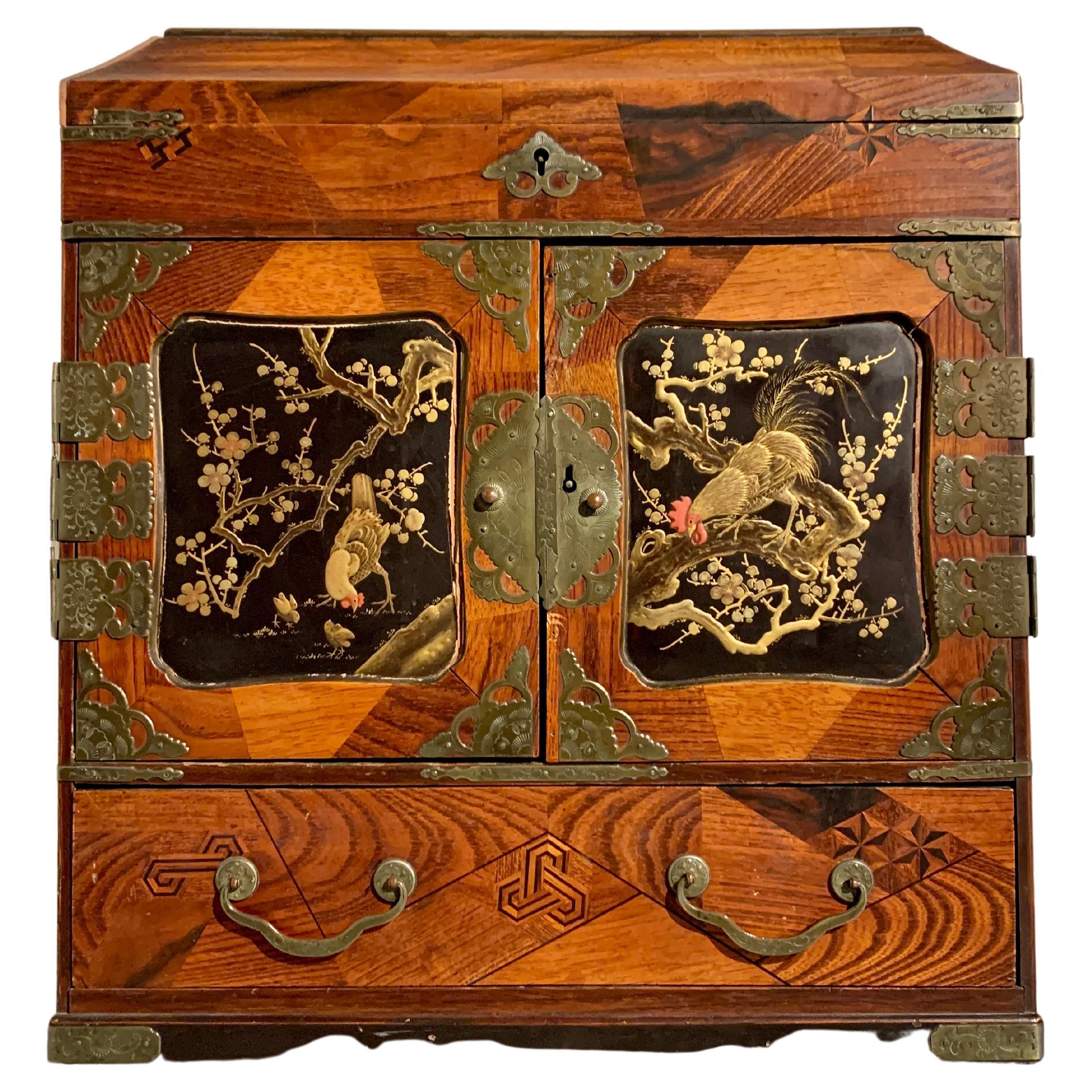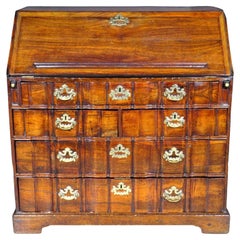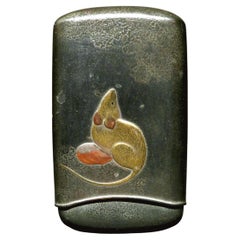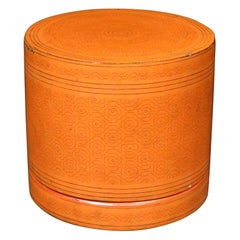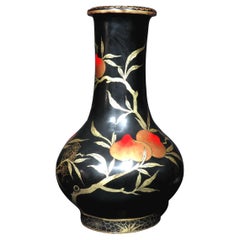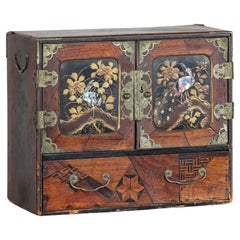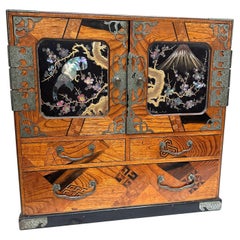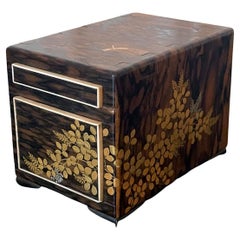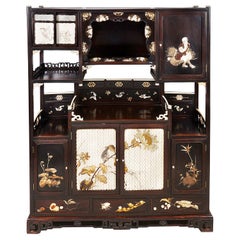Items Similar to Signed Japanese White Lacquer and Maki-E Lacquer Tansu, Meiji Period
Want more images or videos?
Request additional images or videos from the seller
1 of 9
Signed Japanese White Lacquer and Maki-E Lacquer Tansu, Meiji Period
$2,800
£2,116.45
€2,432.18
CA$3,898.98
A$4,337.46
CHF 2,273.75
MX$53,002.68
NOK 28,953.37
SEK 27,255.59
DKK 18,155.31
Shipping
Retrieving quote...The 1stDibs Promise:
Authenticity Guarantee,
Money-Back Guarantee,
24-Hour Cancellation
About the Item
The case decorated overall in crackle-glaze white lacquer and fitted with a patinated metal carrying handle over three tiers of small drawers. The first two tiers are comprised of a pair of short off-set drawers with organic-inspired metal pulls, over a single lower drawer fitted with a patinated metal bail handle, their fronts decorated with hand applied gold maki-e lacquer depicting a songbird amongst flowering branches.
Signed in characters on the underside.
- Dimensions:Height: 6 in (15.24 cm)Width: 6 in (15.24 cm)Depth: 3.25 in (8.26 cm)
- Style:Meiji (Of the Period)
- Materials and Techniques:
- Place of Origin:
- Period:
- Date of Manufacture:1868-1912
- Condition:Wear consistent with age and use. In very good overall condition with minor losses to the glazing.
- Seller Location:Ottawa, CA
- Reference Number:1stDibs: LU272837668143
About the Seller
5.0
Vetted Professional Seller
Every seller passes strict standards for authenticity and reliability
Established in 1989
1stDibs seller since 2017
129 sales on 1stDibs
Typical response time: 4 hours
- ShippingRetrieving quote...Shipping from: Ottawa, Canada
- Return Policy
Authenticity Guarantee
In the unlikely event there’s an issue with an item’s authenticity, contact us within 1 year for a full refund. DetailsMoney-Back Guarantee
If your item is not as described, is damaged in transit, or does not arrive, contact us within 7 days for a full refund. Details24-Hour Cancellation
You have a 24-hour grace period in which to reconsider your purchase, with no questions asked.Vetted Professional Sellers
Our world-class sellers must adhere to strict standards for service and quality, maintaining the integrity of our listings.Price-Match Guarantee
If you find that a seller listed the same item for a lower price elsewhere, we’ll match it.Trusted Global Delivery
Our best-in-class carrier network provides specialized shipping options worldwide, including custom delivery.More From This Seller
View AllA Very Fine & Rare 18th Century Chinese Export Padouk Block-Front Bureau
Located in Ottawa, Ontario
The richly figured case showing a drop-down panel affixed with a lectern bar, opening to an interior fitted with an arrangement of banks of small drawers, pigeonhole compartments & v...
Category
Antique Mid-18th Century Chinese Chinese Export Furniture
Materials
Other
A Very Fine Takamaki-e Lacquer Cheroot Case in the Manner of Shibata Zeshin
By Shibata Zeshin
Located in Ottawa, Ontario
The 'ishime' lacquered case consisting of two conforming molded sections with one sliding overtop the other, both sides decorated with hand painted gilt, silver & burnt dark russet (kasshoku) lacquers, depicting motifs in low relief of a rat with an acorn on one side and two acorns on the opposing.
In Japanese culture rats are considered auspicious symbols of fertility & wealth, acorns symbolize prosperity & growth. Signed with characters and a mon on one edge.
Takamaki-e is a lacquer technique in which metallic powders such as silver, gold, copper, pewter etc., are used in combination with lacquer & clay-dust to build up motifs in low relief.
Please note that the color tones & hues of the lacquered motifs appear somewhat more vibrant in the images due to ambient lighting conditions.
Regarding the opinion stating the superior quality of this fine example being likened to works associated with those by Shibata...
Category
Antique 1870s Japanese Meiji Lacquer
Materials
Lacquer
Highly Decorative Antique Burmese Lacquered Betel Box / Kun-It, Circa 1900
Located in Ottawa, Ontario
The vermillion lacquered cylindrical body decorated overall with repeating bands of curvilinear geometric motifs, the cover lifting to reveal both of its original trays intended to h...
Category
Early 20th Century Burmese Lacquer
Materials
Lacquer, Bamboo
A Monumental 19th C. Ryukyu Hariko (Papier Mâché) Vase, Meiji Period (1868-1912)
Located in Ottawa, Ontario
A stunningly attractive & exceptionally large baluster shaped ‘Ryukyu Hariko’ (papier mâché) vase, masterfully decorated overall with hand painted images of a fruiting peach tree ren...
Category
Antique Early 1900s Japanese Meiji Lacquer
Materials
Lacquer, Paper
Exceptional & Highly Decorative Pair of Chinese Export Carved Giltwood Panels
Located in Ottawa, Ontario
An exceptional & highly decorative pair of antique Chaozhou hand carved giltwood panels, both showing finely executed relief-carved & gilded vignettes, composed in a terraced format ...
Category
Early 20th Century Chinese Chinese Export Sculptures and Carvings
Materials
Giltwood
19th Century Chinese Famille Verte Porcelain Garlic Mouth Vase, Kangxi Marks
Located in Ottawa, Ontario
The globular body finely decorated with hand applied enamels depicting nobles taking tea surrounded by attendants and small children. The slender neck rising to a bulbous mouth (seemingly ground), the underside of the base showing small firing cracks and blue under-glaze double ring Kangxi marks...
Category
Antique 19th Century Chinese Qing Ceramics
Materials
Porcelain
You May Also Like
Japanese Lacquer Box with Mother-of-Pearl Inlay and Parquetry Drawers
Located in Yonkers, NY
A finely crafted Japanese tabletop cabinet from the early 20th century, this compact storage piece is richly detailed with traditional decorative techniques and export-era flourishes...
Category
Early 20th Century Japanese Meiji Decorative Boxes
Materials
Wood
Antique Japanese Yosegi (Marquetry) Shibayama Ko Tansu Meiji Period
Located in Point Richmond, CA
Antique Japanese Yosegi (Marquetry) Shibayama Ko Tansu, Meiji period
The marquetry is composed of keyayaki (zelkova) and kakinoki (persimmon) wood. Two small doors with inlaid Moth...
Category
Antique Late 19th Century Japanese Meiji Furniture
Materials
Wood, Mother-of-Pearl, Lacquer
Fine Miniature Japanese Kodansu with Lacquer Inlays
Located in Atlanta, GA
A fine Japanese miniature kodansu constructed from Kaki wood (Persimmon) circa 19th century, late Meiji period. With its expressive exotic wood grains and exposed tenon construction,...
Category
Antique Late 19th Century Japanese Meiji Lacquer
Materials
Wood
Rare and Important Japanese Meiji Period Shadona, circa 1890
Located in Brighton, Sussex
A Japanese hardwood shodana with inlaid and lacquer decoration, Meiji Period 1868-1912, by Shoso Kosen, bearing two character signature and red seal, with various shelves, cupboards,...
Category
Antique Late 19th Century Japanese Furniture
Materials
Hardwood, Lacquer
19th Century Japanese Lacquer Table Cabinet
Located in Richmond, London
A fine and rare Japanese black lacquer table or jewellery cabinet, exquisitely decorated in intricate detail, dating to the late Meiji per...
Category
Antique Late 19th Century Japanese Meiji Lacquer
Materials
Metal
Japanese Marquetry and Lacquer Jewelry Chest, Meiji Period, circa 1900, Japan
Located in Austin, TX
A very attractive Japanese wood table top jewelry or collector's chest with marquetry and lacquer decoration, Meiji period, circa 1900, Japan. Previously in the collection of Asbjorn Lunde (1927 - 2017).
The chest is crafted in the form of a Chinese seal...
Category
Antique Early 1900s Japanese Meiji Lacquer
Materials
Wood, Softwood, Lacquer
More Ways To Browse
White Lacquer Furniture
Off White Antique Furniture
Antique Crackle Glaze
Bail Handles
White Lacquer Asian
Antique Crackle Paint
Asian Painted Drawers
Meiji Tansu
Bail Pull
19th Century Tansu
Lacquer Tansu
Asian Tansu
Small Tansu
Small Japanese Tansu
Tansu Pair
Japanese Lacquer Pearl
Carved Cinnabar
Japanese Lacquerware
